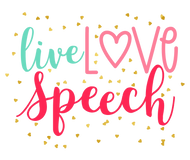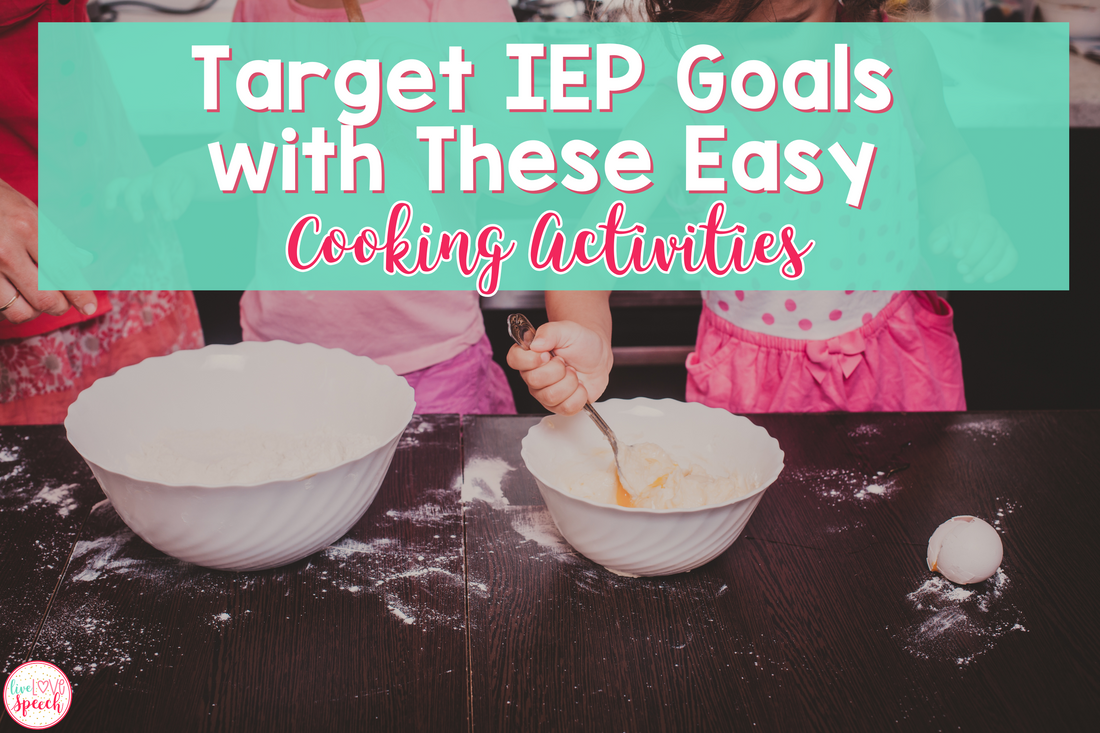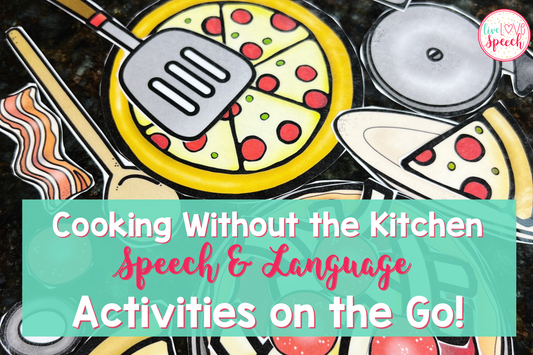
When I first started as an SLP, I never imagined where I would be today, helping kids work on IEP goals through simple, hands-on cooking activities! Honestly, some of the best speech sessions I’ve ever had have involved measuring, mixing, and decorating. There is just something about cooking that naturally creates conversation, builds cooperation, and sneaks in a ton of practice across multiple goal areas.
If you’re looking for fresh ideas, these cooking activities are where it’s at. Here’s how I’ve seen cooking bring goals to life in real, meaningful ways!
Throughout this post, I’ll be sharing tips on how to incorporate Visual Recipe Cards into these cooking activities. These cards are a fantastic tool to help reinforce instructions, sequencing, and vocabulary while keeping kids engaged. They provide clear, step-by-step visuals that support students as they work on their IEP goals.
Grab your Visual Recipe Cards here, and for more information on how to use them effectively, check out this blog post.
Keep reading for some fun, easy-to-implement ideas that you can use right away with your students!
Language IEP Goals
Following Directions
Cooking is the perfect natural setup for practicing following directions. Start simple with short instructions like "Pour the milk" or "Stir the batter," and gradually build up to multi-step directions like "First, scoop the flour, then add it to the bowl and stir." Students are way more motivated when directions come with a reward, like cookies at the end!
Visual Recipe Cards can be especially helpful here. Each step is broken down with a clear image and text, allowing kids to follow along easily and making the directions even more accessible.
Expanding Vocabulary
Cooking gives endless chances to introduce and practice action words like whisk, scoop, and pour, along with describing words like sticky, sweet, and crunchy. Pairing new vocabulary with visuals, hands-on actions, and repetition helps words really stick in a fun, low-pressure way.
Encouraging Sentence Building
I love using sentence starters during cooking activities to help students build full sentences. Prompts like "I see...", "I feel...", and "I like..." keep the conversation flowing and help students share their experiences while expanding their language skills.
Social Skills IEP Goals
Turn-Taking and Cooperation
Cooking activities are full of built-in chances to practice turn-taking and cooperation. Whether it’s passing the spoon, waiting their turn to add an ingredient, or working together to stir a big batch of batter, kids are learning essential social skills without it feeling like a drill. Using visual supports like timers or turn-taking charts helps set clear expectations and keeps things moving smoothly.

For extra support, Visual Recipe Cards can be used as a visual aid when it’s time to move to the next ingredient. Students can see the picture of the item to be added, making the transition smoother and more organized.
Using Polite Requests and Responses
There are so many natural opportunities to model and practice polite language during cooking. Asking for materials like "Can I have the bowl, please?" and responding with "Thank you!" or "You're welcome!" helps students generalize these important skills into daily life.
Engaging in Conversation
Cooking is such an easy way to get conversations started! I love asking questions like, "What’s your favorite topping for pizza?" or "What do you think this will taste like?" These moments help students practice turn-taking in conversation, express preferences, and share personal experiences !
Fine Motor IEP Goals
Building Hand Strength and Coordination
Simple cooking tasks like stirring batter, rolling dough, and squeezing icing bags are fantastic for building hand strength and coordination. Students don’t even realize they’re working on fine motor skills because they’re so focused on the fun task at hand.
Use Visual Recipe Cards for each step of the cooking process. Kids can follow the images as they complete each task, which can help guide them through the activity while working on their fine motor skills.
Improving Precision
Cooking activities that require careful movements, like spreading butter, cracking eggs, or sprinkling toppings, provide valuable practice in a meaningful context. Plus, it’s easy to adapt tasks based on each student’s needs and skill level.

Promoting Bilateral Coordination
Cooking encourages students to use both hands together in functional ways — from holding a bowl while stirring to rolling dough evenly with a rolling pin. These everyday tasks help support bilateral coordination development in a purposeful and motivating setting.
Having a Visual Recipe Card nearby for each step reinforces the connection between the task and the image, making the process of using both hands for each action clearer.
Math IEP Goals
Counting and Sequencing
Following a recipe naturally reinforces counting and sequencing skills. Students can count ingredients ("We need three scoops of flour!") and practice putting steps in order ("First we mix, next we bake, last we decorate.") with built-in motivation, the finished treat!
Measuring and Estimation
Measuring ingredients introduces important math concepts like fractions and estimation. Students learn how to use measuring cups and spoons, and you can sneak in simple math questions like, "How much is half a cup?" or "Do you think this will be enough pasta?"
Comparing and Categorizing
Cooking gives lots of opportunities to compare amounts (more vs. less) and categorize foods (fruits vs. vegetables, dry vs. wet ingredients). Sorting utensils by size or grouping foods by color are fun ways to target math vocabulary and reasoning
Use Visual Recipe Cards to help students visually categorize ingredients and follow the sequence of tasks with ease.
Transform Your IEP Goals
Cooking activities have truly transformed how I approach working on IEP goals. Whether the focus is language, social skills, fine motor, or math, being in the kitchen pulls it all together in a way that feels exciting and natural for kids.
Using Visual Recipe Cards in these cooking activities offers a practical visual support that helps students stay engaged, focused, and motivated to succeed in all areas of their IEP goals.
If you have never tried IEP cooking activities before, start small. You can make trail mix, assemble simple sandwiches, or even decorate cookies. No matter what you start with, you’ll be amazed at how many goals you can target in just one session!
Happy cooking and happy goal-crushing! 🧡
P.S. Be sure to check out all my other blog posts! They’re packed with tips and activities that can really enhance your cooking with kids sessions. Save this one for your next cooking session and refer back to it whenever you need fresh ideas!








